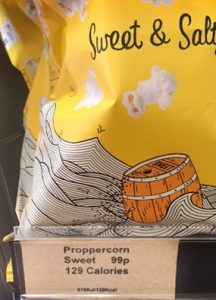 Six English worksite cafeterias increased the proportions of healthier cooked meals, snacks, cold drinks and/or sandwiches available. Healthier options were defined as those with fewer calories (kcal). When cafeterias offered these healthier options, there was a 7% reduction in calories purchased from targeted food categories. Increasing the proportion of lower calorie foods in worksite cafeterias seems a promising intervention for healthier consumption.
Six English worksite cafeterias increased the proportions of healthier cooked meals, snacks, cold drinks and/or sandwiches available. Healthier options were defined as those with fewer calories (kcal). When cafeterias offered these healthier options, there was a 7% reduction in calories purchased from targeted food categories. Increasing the proportion of lower calorie foods in worksite cafeterias seems a promising intervention for healthier consumption.
Impact of increasing the proportion of healthier foods available on energy purchased in worksite cafeterias: A stepped wedge randomized controlled pilot trial. Pechey, R., Cartwright, E., Pilling, M., Hollands, G. J., Vasiljevic, M., Jebb, S. A., & Marteau, T. M. Appetite.



